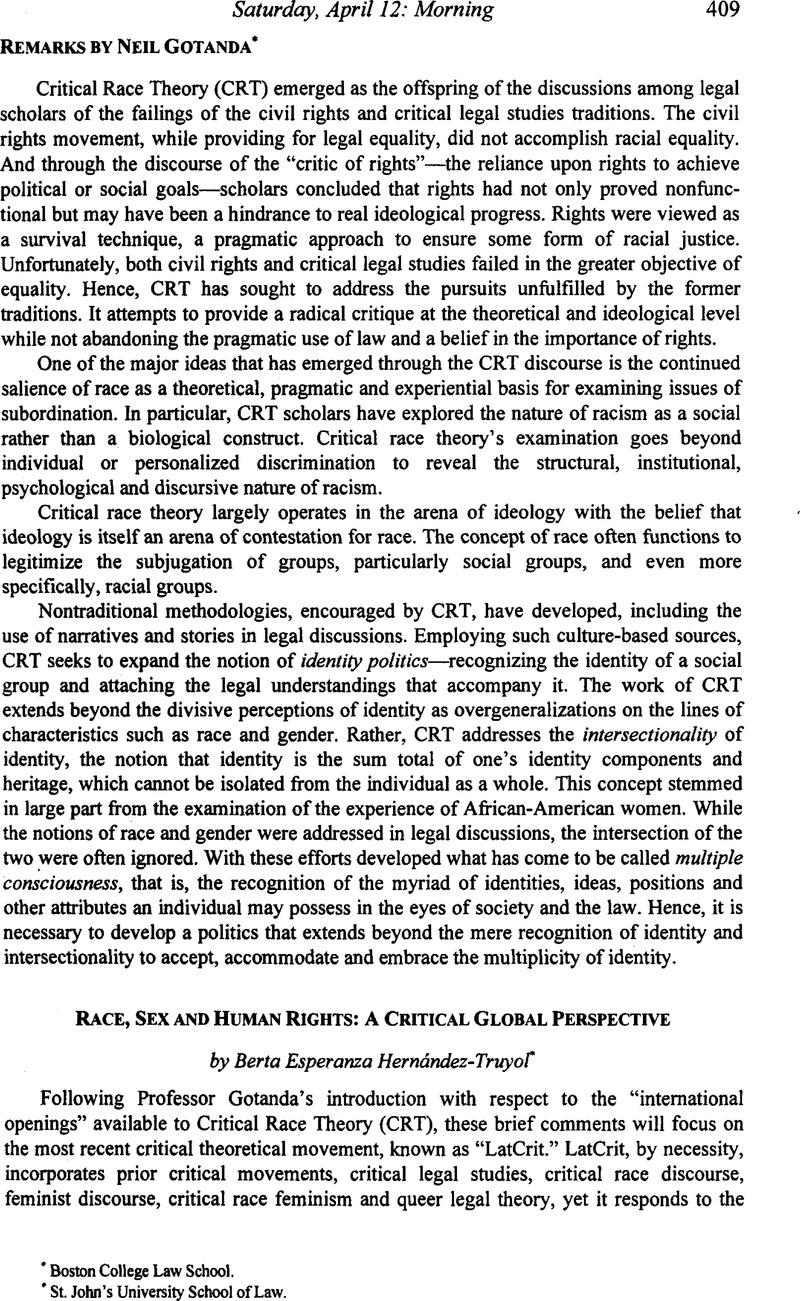No CrossRef data available.
Published online by Cambridge University Press: 28 February 2017

1 Critical Race Theory: The Key Writings that Formed the Movement xix (Kimberlé Crenshaw et al. eds., 1995).
2 Friedberg, James J., An Historical and Critical Introduction to Human Rights, in Human Rights in Western Civilization 1600-Present 2 (Maxwell, John A. & Friedberg, James J. eds., 2d ed. 1994)Google Scholar (quoting Grotius).
3 United Nations Development Programme, Human Development Report 29 (1995).
4 International Covenant on Civil and Political Rights, Dec. 16, 1966, 999 U.N.T.S. 171 (entered into force Mar. 23, 1976) [hereinafter ICCPR].
5 International Covenant on Economic, Social and Cultural Rights, Dec. 16, 1966, 993 U.N.T.S. 3 (entered into force Jan. 3, 1976).
6 See Hernández-Truyol, Berta Esperanza, Women’s Rights as Human Rights—Rules, Realities and the Role of Culture: A Formula for Reform, 21 Brook. J. Int’l L. 603, 633 (1996)Google Scholar; see also United Nations Human Development Programme, Human Development Report 1993, at 25 (1993) (noting exclusion of women from “economic [opportunities] or from better jobs”).
7 ICCPR, supra note 4, art. 20.
8 Convention on the Elimination of All Forms of Racial Discrimination, Mar. 7, 1966, 660 U.N.T.S. 195 (entered into force Jan. 4, 1969) (“Considering that the Universal Declaration of Human Rights proclaims that all human beings are born free and equal in dignity and rights ... without distinction of any kind, in particular as to race, color or national origin”).
9 Id. art. 1 (emphasis added).
10 Ian F. Haney-Lopez, White by Law: The Legal Construction of Race (1996).
11 Alan David Freeman, Legitimizing Racial Discrimination Through Antidiscrimination Law: A Critical Review of Supreme Court Doctrine, in Critical Race Theory, supra note 1, at 29-47.